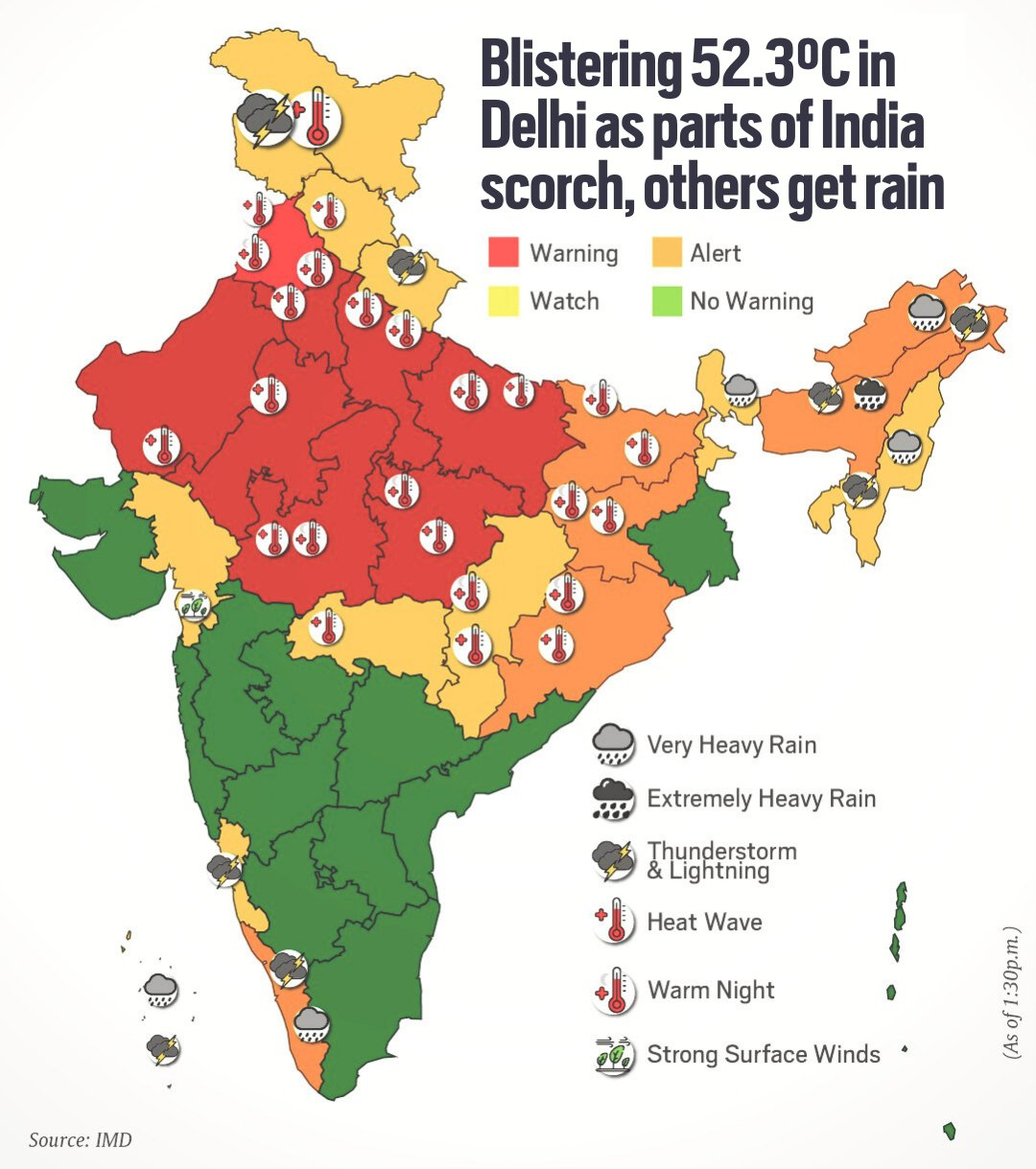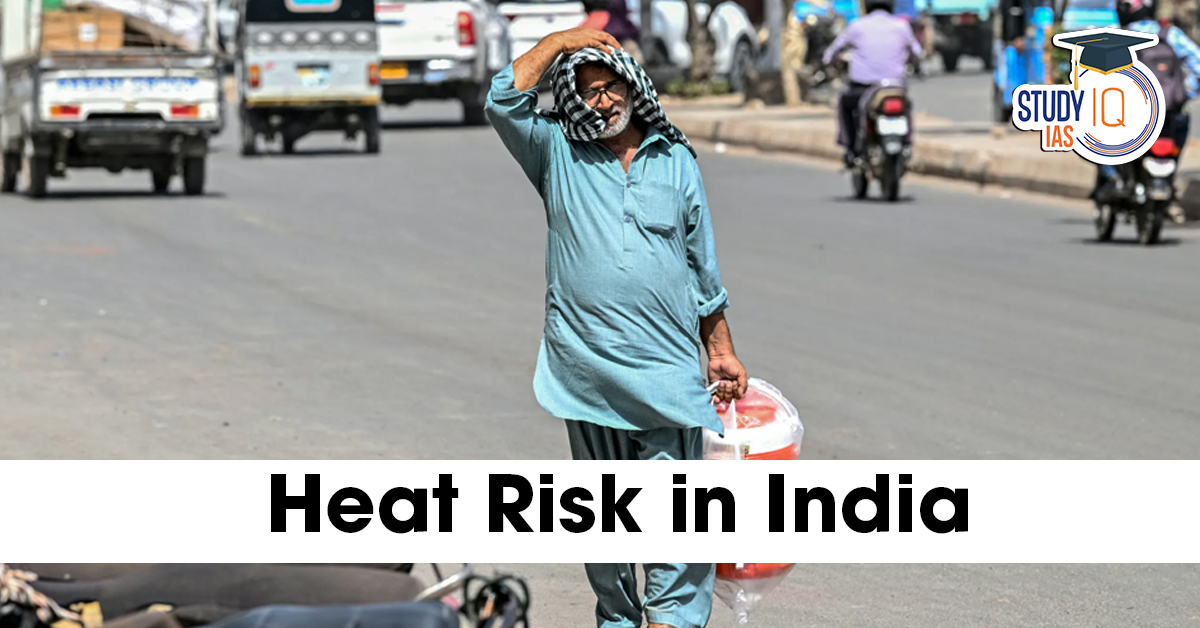Table of Contents
Context: A recent study by the Council on Energy, Environment and Water (CEEW), titled ‘How Extreme Heat is Impacting India’, reveals that 57% of Indian districts are at high or very high risk due to extreme heat exposure.
About Heat Risk
- Heat Risk refers to the likelihood of heat-related illness or death due to extreme heat.
- More comprehensive than just temperature readings.
- Determined by three critical factors:
- Intensity of heat & compounding effects (e.g., humidity, urban heat islands).
- Level of exposure to extreme temperatures (e.g., outdoor workers, urban dwellers).
- Vulnerability of the population (e.g., elderly, children, pre-existing health conditions).
| Heatwaves |
| No single universal definition. Generally refers to prolonged periods of abnormally high temperatures in a region. Declared based on local climate norms and thresholds. |
Key Drivers of Heat Risk in India
- Rise in Very Warm Nights
- 70% of districts had 5+ more warm nights (2012–2022).
- Warm nights prevent body cooling, raising the risk of heat stroke and worsening diabetes/hypertension.
- Increase in Relative Humidity (North India)
- Indo-Gangetic Plain humidity rose from 30–40% to 40–50%.
- High humidity reduces sweat evaporation, increasing heat stress.
- Urbanisation & Population Density
- Cities like Delhi & Mumbai face a higher risk due to dense population and heat-absorbing concrete.
- Tier II/III cities are also heating up due to rapid urban growth.
- Socio-Economic & Health Vulnerabilities
- States like Andhra Pradesh, Bihar, UP, and Maharashtra are more vulnerable.
- Risk worsened by elderly population and chronic diseases (e.g., hypertension, diabetes).
Key Findings of the Study
- States facing the highest risk include Delhi, Maharashtra, Goa, Kerala, Gujarat, Rajasthan, Tamil Nadu, Andhra Pradesh, Madhya Pradesh, and Uttar Pradesh.
- The Council on Energy, Environment and Water (CEEW), based in New Delhi, is one of the world’s leading and best-managed independent climate think tanks.
- 2024: Warmest Year on Record
- 2024 was the hottest year globally and in India.
- Global temperature was 5°C above pre-industrial levels (1850–1900).
- India’s average temperature was 2°C higher than the 1901–1910 average.
- India’s Climate Impact is Already Visible
- India saw its longest heatwave since 2010.
- Over 44,000 heatstroke cases were reported in 2024
- Inadequate Heat Action Plans (HAPs)
- Many HAPs lack long-term strategies.
- Even where plans exist, implementation is weak, per the Sustainable Futures Collaborative (SFC).
- This undermines India’s climate resilience.
- Future Risks
- Without urgent action, heat-related deaths will likely rise.
- India faces more frequent, intense, and longer heat waves in the coming years.


 Places in News for UPSC 2026 for Prelims...
Places in News for UPSC 2026 for Prelims...
 Lake Natron: Location, Features, Wildlif...
Lake Natron: Location, Features, Wildlif...
 Erra Matti Dibbalu Added to UNESCO Tenta...
Erra Matti Dibbalu Added to UNESCO Tenta...

























